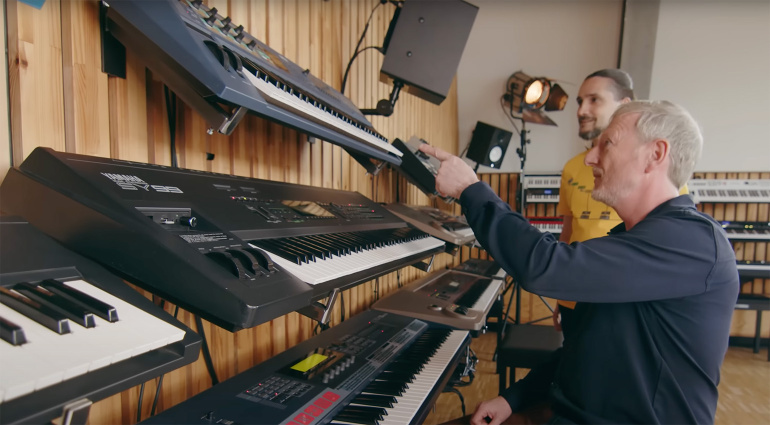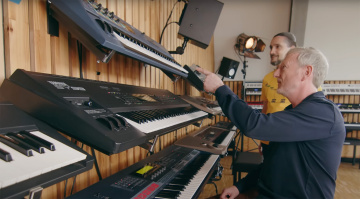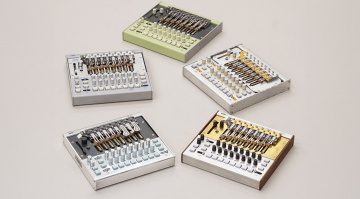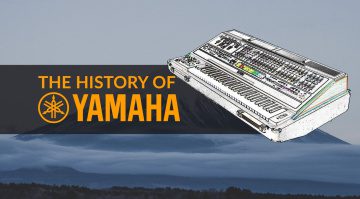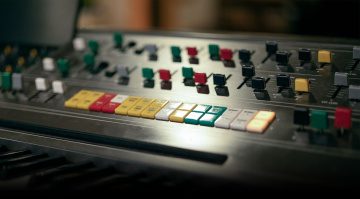Synth Space Berlin, Light Sequencing, Experimental FM: Synth Journal
In this edition of Synth Journal, Matt Johnson of Jamiroquai and Dom Sigalas take you on an exclusive tour of Yamaha’s amazing Synth Space Berlin. Also: a fascinating light-based performance instrument, an experimental FM software synth, and a retro jam on Radio Shack computers.
Synth Journal
LSe: A Fascinating Light-Based Performance Instrument
Developer Kacper Ziemianin a.k.a. Ctrl Freq shared the details on the latest version of his incredible LSe – a light-based performance system for experimental electronic music. According to Kacper, he’s been working on the project for more than a decade, and he’s even performed live using the LSe at numerous events and festivals across Europe. The third and current version marks a significant improvement over the previous editions.
So what is LSe? In a nutshell, it’s a light-based performance instrument built using Raspberry Pi, Pure Data, and Arduino. It consists of three parts: a sensor panel, a light sequencer, and a control panel. The sensor panel contains 32 light-dependent resistors, which act as controllers for the built-in sound engine. The light sequencer features eight RGB LEDs, which can be placed on top of the sensor panel to modulate the photo resistors. The LEDs can work together or independently, which allows for everything from monophonic sequences to complex polyrhythms.
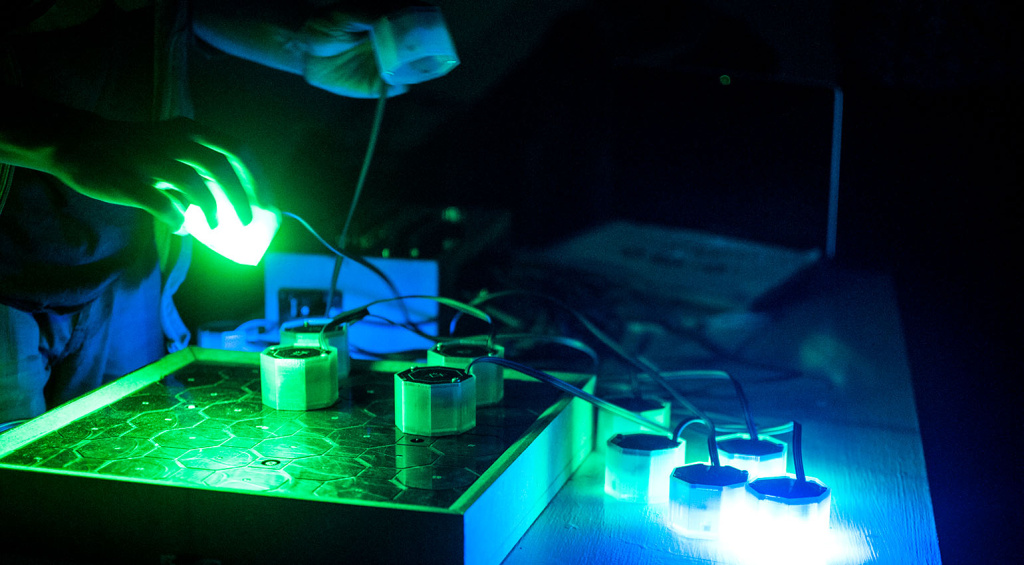
That said, you don’t have to place the LEDs directly on the sensors to manipulate the sound. As can be seen in some of the demo videos, you can also hold them in your hands and move them to control the sound, or even use a different light source altogether, which creates many exciting performance opportunities. A fascinating instrument for experimental electronic live performance! Just make sure to turn off the lights before you go on stage.
To find out more about the LSe, check out the Ctrl Freq YouTube channel or contact the developer directly.
Take a Tour of Yamaha’s Synth Space Berlin with Dom Sigalas and Matt Johnson
Yamaha’s Synth Space Berlin is an amazing showroom that houses pretty much everything from 50 years of Yamaha synth history. From the epochal CS-80 to the DX series to Yamaha’s groundbreaking physical modeling synths of the 90s to the modern-day Montage M and YC series, it’s all there and in immaculate shape. They’ve even got a CP-70, tuned and ready to go. Which synth lover wouldn’t love to spend a few hours or even days in that space?
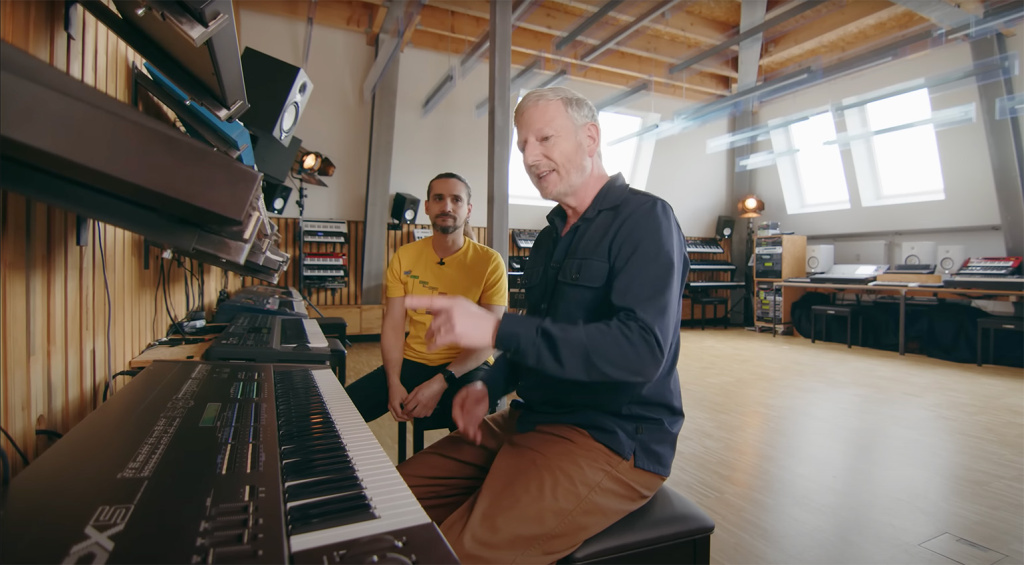
If you can’t make it to Berlin anytime soon, don’t worry! In this new video, Dom Sigalas and Matt Johnson take you on an exclusive tour of this amazing space. But be warned – chances are that it’ll only make you want to go there even more.
Glitchmachines Skein is an Experimental FM Synth
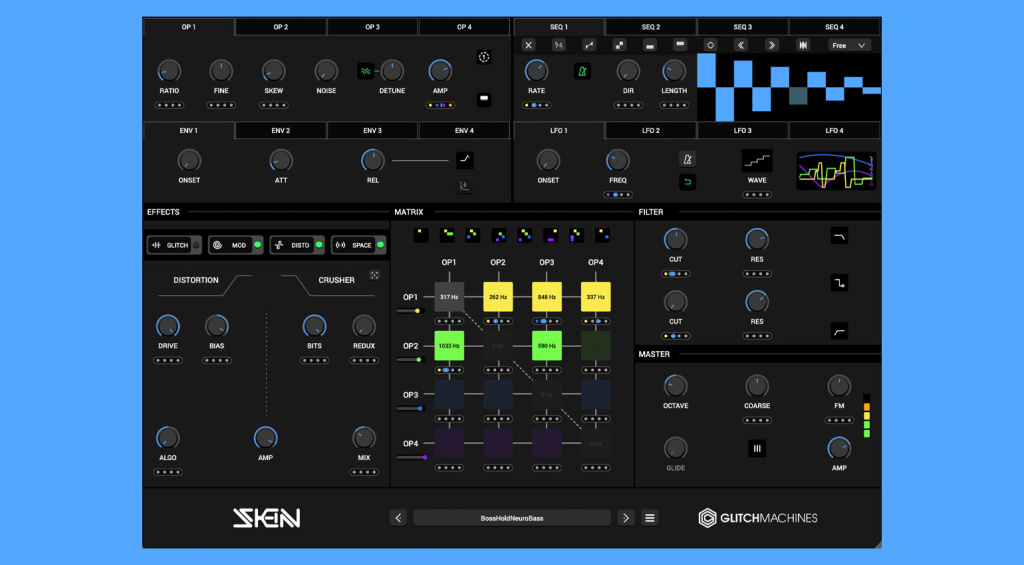
FM synthesis has been making a phenomenal comeback in recent years, largely thanks to modern user interfaces that take the pain out of programming and make it easier to achieve the desired results. That said, FM still holds many surprises that can take your sounds in unexpected, often exciting directions. And Glitchmachines’ new synth Skein is all about these “happy accidents”. If you’re into experimental sound design, this FM-based software synth should definitely be on your list.
Each of Skein’s four operators has a Skew control that takes the waveform from sine to more complex waveshapes such as sawtooth. This opens up a wide array of sound design possibilities. An FM matrix with 16 cells makes it easy to set up the FM algorithm and modulation assignments. Skein also offers a huge modulation engine with four LFOs, four envelopes, and even four 32-step sequencers. Furthermore, there’s a quad multi-effects chain with seven effects to choose from.
Skein runs on macOS 10.15 or higher and Windows 11 in VST3 and AU formats. It’s now available from the developer’s website for $89.
A Terrible Ride: Making Music on Radio Shack TRS-80 Computers
Here’s another video that caught my attention this week. I wonder if it ended up in my YouTube feed because I’d immersed myself deeply in retro gaming videos while dealing with a recent Covid infection. Anyway, for this trippy jam, YouTuber Downpoly used a pair of vintage TRS-80 Model 4 computers (sold at Radio Shack in the 1980s) with Orchestra-90 and MIDI-80 accessories, processed through a range of modern effects pedals. I love the organic vibe he gets out of this Chiptune setup! Who would’ve thought a bunch of Radio Shack computers could sound so deep?

 5,0 / 5,0 |
5,0 / 5,0 | 